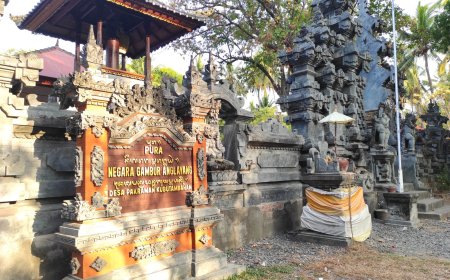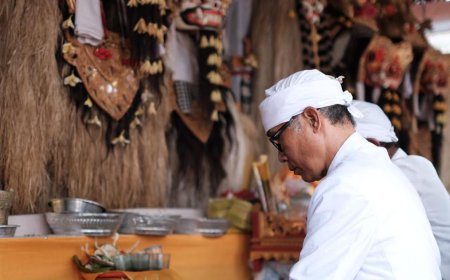The Mystery and History of Pura Taman Sari Swagina: From Farmers' Worship to Blessings for Athletes and Students
Did you know that Pura Taman Sari Swagina was originally a place of worship for farmers, but has now become a spiritual center for all walks of life? Known for its mystical aura, this temple is said to have a legend of three dragons guarding nature and a sacred banyan tree. Every year, people come to seek blessings, especially before exams or competitions. Let’s explore the mystical story behind this temple in this article!
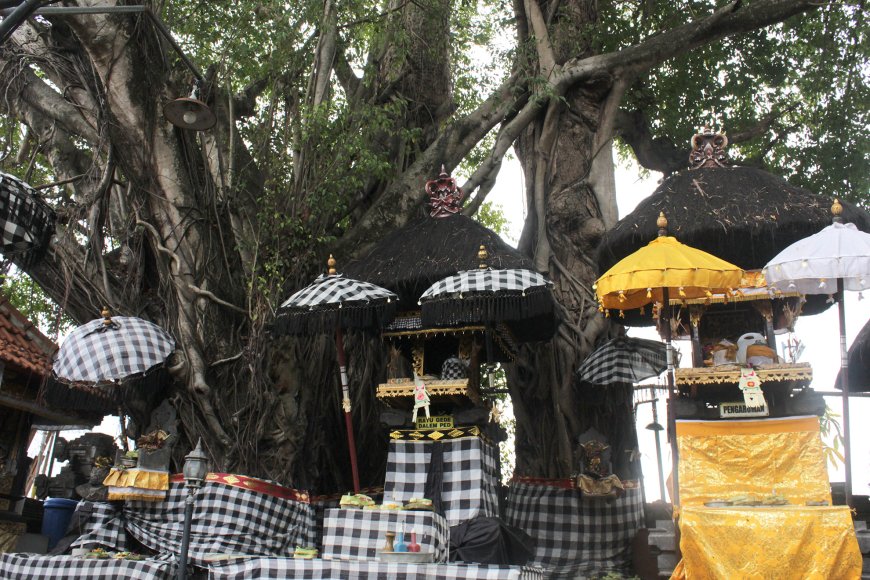
Pura Taman Sari Swagina, located to the south of the Ngurah Rai Sports Hall (GOR) in Denpasar, holds many mystical and spiritual stories that make it one of the religious and historical centers in Bali. Initially known as Pura Pangulun Sawah, this place once served as a site of worship for farmers in the Kreneng area of Denpasar. However, over time, the temple’s function has undergone a significant transformation in line with the social and economic dynamics in the region.
Early History: Pura Pangulun Sawah
Pura Taman Sari Swagina has a long history rooted in the agricultural life of the local community. As Pura Pangulun Sawah, this temple played a significant role in the spiritual lives of farmers. They came to pray for fertile rice fields and successful harvests. The Goddess of Fertility, Ida Bhatari Sri, was the central deity worshipped at this temple, closely linking spirituality and agriculture in Bali’s past.
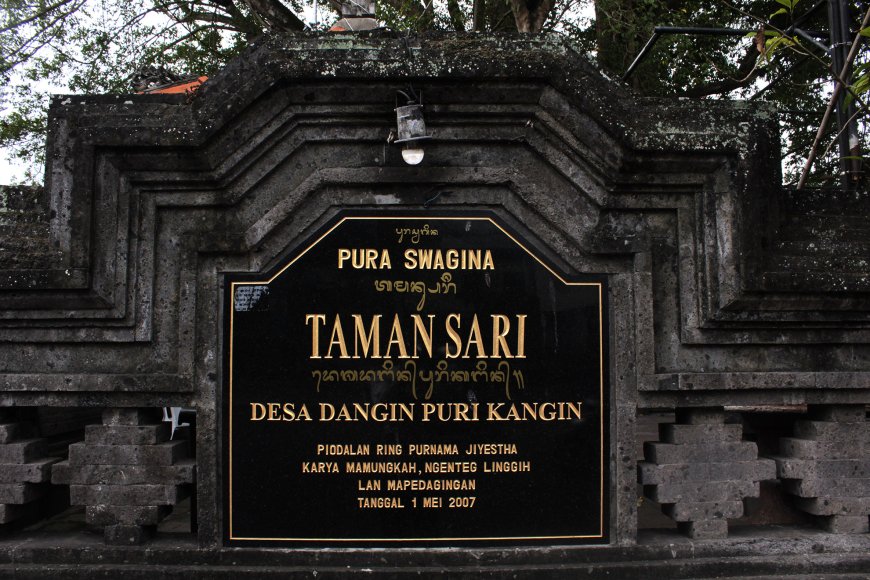 Pura Taman Sari Swagina Signboard (Photo Source: Personal Collection)
Pura Taman Sari Swagina Signboard (Photo Source: Personal Collection)
However, over time, changes in land use and shifts in employment reduced the number of farmers who served as the temple’s caretakers (pangempon). As the number of farmers involved declined, the temple’s priests decided to rename the temple Pura Taman Sari Swagina, signifying that it was no longer exclusively for farmers but open to all members of the community.
Name Change and Symbolism
The name change carried profound meaning. Taman Sari, which in Balinese means "the surrounding lake," became a symbol of fertility and blessing. Although physically the temple is not surrounded by a large lake, the symbolism is represented by a small pond within the temple grounds. Meanwhile, Swagina signifies the temple’s openness to various professions. Now, not only farmers but also office workers, teachers, students, and even athletes regularly pray at the temple.
The Sacred Banyan Tree and the Mystery of the Three Dragons
One of the most attention-grabbing elements is the large Banyan tree located on the western side of the temple. This tree is considered sacred by the local community, with many believing its trunk and leaves are manifestations of a mystical giant snake. These stories have become part of local mythology, strengthening the temple’s reputation as a place with powerful spiritual energy.
Beneath the Banyan tree is a cave that is said to connect the temple to the soccer field inside the Ngurah Rai Sports Complex. This cave is believed to be the dwelling place of three dragons, who possess great power in maintaining the balance of nature. Anantaboga Dragon, the ruler of the earth, is tasked with maintaining the stability of the land; Basuki Dragon, the ruler of plants, protects the preservation of flora; while Taksaka Dragon acts as the guardian of the air, ensuring the balance of the sky's elements.
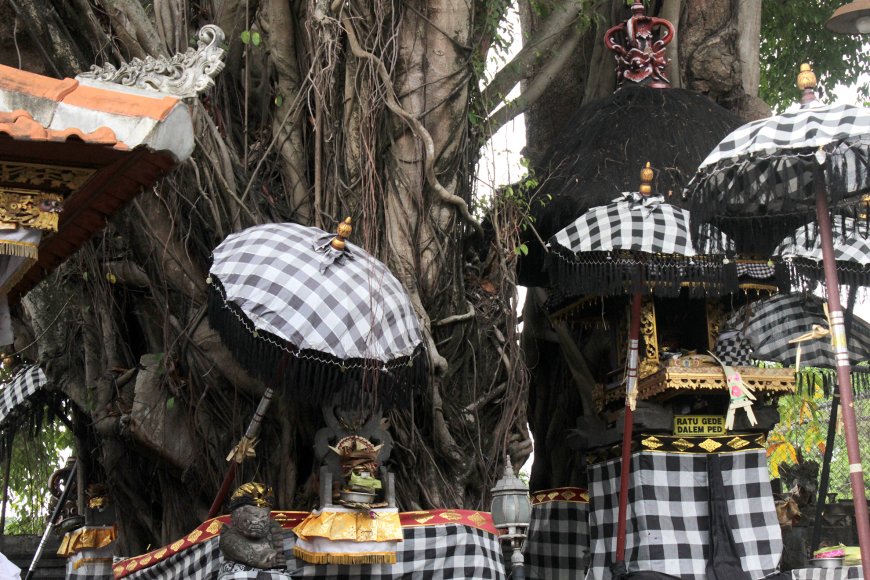 Banyan Tree at Pura Taman Sari Swagina (Photo Source: Personal Collection)
Banyan Tree at Pura Taman Sari Swagina (Photo Source: Personal Collection)
The presence of these three dragons reinforces the belief in the magical power of Pura Taman Sari Swagina. Rituals performed at the temple often aim to honor and seek blessings from these three dragons, so that the balance of nature remains preserved.
Pujawali and Spiritual Power
Every year, Pujawali, or the temple’s anniversary celebration, is held during the full moon of Sasih Jiyesta, attracting thousands of worshippers. For students and athletes in particular, this temple is regarded as a place that bestows blessings for success in academics and sports. Before taking exams or entering competitions, many students and athletes come to seek blessings and good fortune.
For athletes, Pura Taman Sari Swagina holds special significance. They believe that the temple can bring victory in competitions such as the Pekan Olahraga Pelajar (Student Sports Week) and Pekan Olahraga Seni Pelajar (Student Arts and Sports Week). The temple has become something of a “lucky place” for those preparing to compete.
Traditions and Mystical Events
In addition to its spiritual power, Pura Taman Sari Swagina is also known for various mystical phenomena. One famous incident was the mass trance that occurred at schools around Jalan Kamboja in 1998. During this event, students in several schools simultaneously entered a trance or state of possession. After being investigated spiritually, the incident was believed to have been caused by the temple’s spiritual energy "inhabiting" the students.
Since then, students from schools around Jalan Kamboja have regularly prayed at the temple for spiritual protection. To this day, the tradition of praying at Pura Taman Sari Swagina continues, especially during important moments such as student admissions or exams.
Pura Taman Sari Swagina in Modern Life
Pura Taman Sari Swagina has undergone many transformations, from a simple place of worship for farmers to becoming an important spiritual center used by people from various professions. Today, the temple is managed by seven banjar (local communities), including Banjar Kreneng Kelod, Banjar Mertanadi, and Banjar Merta Rauh Kaja. Uniquely, the Brimob dormitory also helps manage the temple, showing the significant role the temple plays in the wider community.
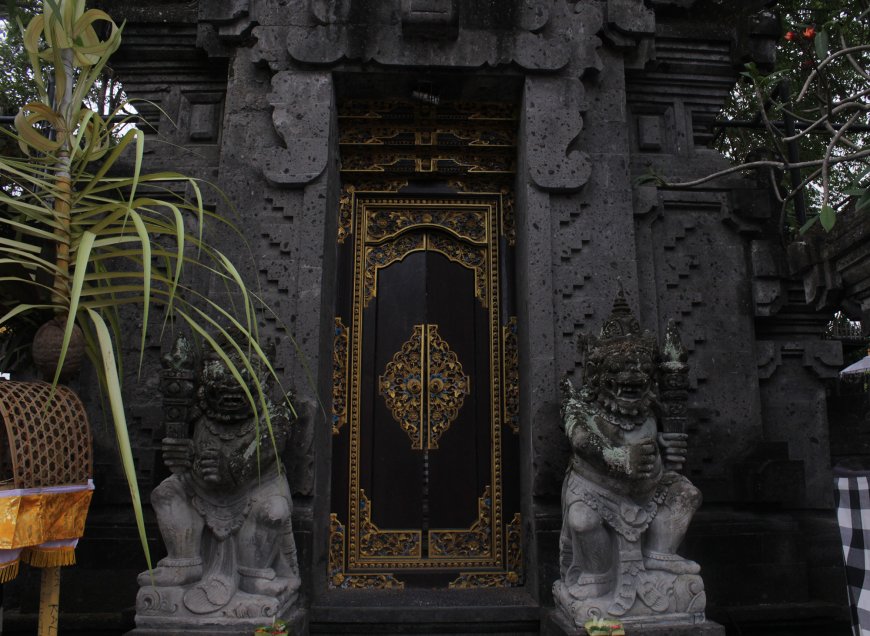 Nista Mandala at Pura Taman Sari Swagina (Photo Source: Personal Collection)
Nista Mandala at Pura Taman Sari Swagina (Photo Source: Personal Collection)
Pura Taman Sari Swagina symbolizes the adaptation of spiritual and cultural values in Bali, capable of enduring amidst the changes of the times. From a place of worship for farmers, the temple has now become a place where students, athletes, and people from all walks of life seek blessings and protection, reflecting inclusivity and tolerance in Balinese spirituality.





















































